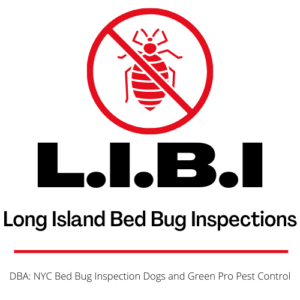As Spring gives way to Summer you may begin to notice a rise in reports of bed bug infestations. Like all of us bed bug behavior is greatly influenced by the change of seasons and infestation rates tend to fluctuate with changes in the weather. But exactly how does the weather impact bed bug behavior and how can we use that information to better manage, prevent, or eliminate bed bug infestations?
There are two primary conditions to consider. Temperature and humidity. We’ll begin with temperature:
Spring and Summer – The Warmth of the Sun
Warmer temperatures generally enhance bed bug activity. Spring and summer provide the optimal conditions for bed bugs to feed and reproduce. The ideal temperature range for bed bugs is between 70° and 90° Fahrenheit.
Under these conditions the bed bugs’ metabolic processes accelerate, leading to:
-
Increased Rates of Reproduction – A single female bed bug will lay between 200 and 500 eggs during her lifetime. Under ideal conditions those eggs will typically hatch in about 6 to 10 days. Warmer temperatures can shorten the development time of bed bug eggs as well as nymphs, leading to a spike in population growth.
-
More Aggressive Feeding Activity – Bed bugs require regular blood meals to sustain themselves and reproduce. Warmer weather promotes more frequent feeding and bed bugs tend to become more active as well as more aggressive in their search for suitable hosts.
-
Accelerated Development – During the warmer months the bed bug life cycle, from egg to nymph to adult, can be completed in as little as 21 days. This rapid development results in a marked increase in bed bug populations over a short period. This is one reason why bed bug infestations seem to be more prevalent and more severe during the spring and summer months.
Fall and Winter – The Chill of the Season
During the colder months bed bugs face a variety of challenges. However, these pests are remarkably resilient and can survive the lower temperatures by adjusting their behavior. During the winter months their physiology also adapts to protect them from harsher weather conditions.
-
Decrease in Activity – Bed bugs tend to become less active when the weather turns colder. Their metabolism slows down, resulting in a marked decrease in feeding and movement. If the temperatures are cold enough they will enter a kind of dormant state that allows them to survive the unfavorable conditions.
-
Slower Rates of Reproduction – The reproductive rate of bed bugs declines as temperatures become colder. Females lay fewer eggs, and the development of those eggs slows down. Eggs that might hatch within 6 to 10 days in warm weather may take several weeks to hatch in cooler temperatures.
-
Survival Mode – Bed bugs have several physiological mechanisms they can call on to survive cold conditions. While prolonged exposure to freezing temperatures can be lethal to bed bugs they can survive short-term exposure to extremely cold conditions. During the winter months bed bugs are more likely to seek out warmer environments to avoid the cold.
Humidity and Bed Bug Survival
Humidity also plays an important role in bed bug behavior and survival. These pests thrive in environments with moderate to high levels of humidity. This helps to protect them from desiccation or drying out. When humidity levels change bed bugs respond accordingly:
-
High Humidity – Higher humidity levels create favorable conditions for bed bugs to thrive. These are more typically found during the spring and summer months. The moist environment helps to prevent bed bugs from losing the water that is critical to their survival. This is particularly true of nymphs, who are more susceptible to drying out than adults.
-
Low Humidity – Lower humidity levels, commonly found during the winter months, can pose more of a challenge for bed bugs. Dry air increases the risk of desiccation, especially among nymphs. Bed bugs often compensate for the lower humidity by seeking out more favorable environments in homes and other buildings.
Weather Conditions and Pest Control
Seasonal weather conditions have a direct effect on bed bug management and pest control in general. Seasonal changes in temperature and humidity necessitate different approaches to pest management.
-
Summer Strategies – During the warmer months pest control strategies should focus on regular inspections and integrated pest management, including a combination of chemical and non-chemical treatments such as heat treatments. Public awareness also plays a critical role, and educating the public on the spread of bed bugs can help reduce the rate of infestations.
-
Winter Strategies – In colder months bed bug control should focus on monitoring, maintenance and targeted treatments designed to detect any dormant bed bugs and prevent them from re-emerging when the temperatures rise. Maintaining appropriate humidity levels in homes can also help top minimize bed bug populations.
Seasonal weather can greatly impact bed bug behavior, reproduction and survival. Warm weather with high humidity levels during spring and summer bring increases in bed bug activity and population growth. As temperatures drop during the winter months bed bugs suffer from a slower metabolic rate that impedes reproduction and dulls their feeding habits.
By understanding these seasonal changes in bed bug behavior we can develop more effective pest control strategies that can help to prevent bed bug infestations throughout the year.
Published by Scott Palatnik
If you believe you’ve brought bed bugs into your home or office, give us a call, we can help!
Now with 2 locations. On Long Island @ 516-619-6149, or in NYC @ 212-299-9186
We are Long Island Bedbug Inspections.
Your Bedbug Inspection, and Elimination solution.


